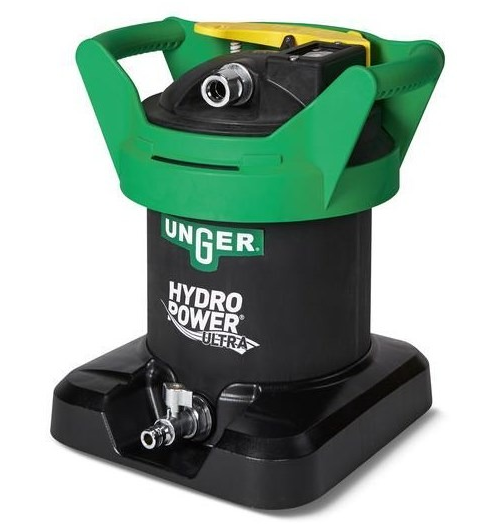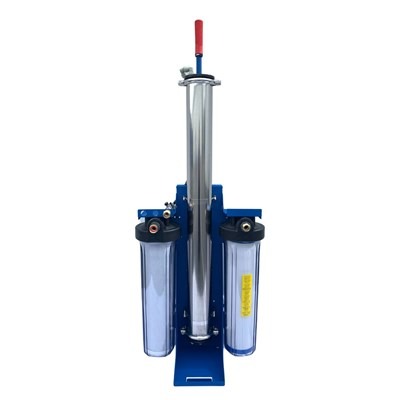DI vs RODI: Which one do I Need?
DI versus RODI: Which Do I Need?
While the initial cost of a DI tank is less than an RODI system, DI resin is expensive. For most professional window cleaners, an RODI setup pays off in the long run.
With an RODI system, the water first runs through an RO filter, removing about 98% of the water's impurities. Then the rest of the water goes through a DI filter, greatly reducing the amount and cost of DI resin in the long run.
RO membranes can last quite awhile, especially if the water first runs through a carbon filter first. A carbon filter can not only help remove sediment -- such as rust from a pipe -- that may have entered the tap water system, it removes chlorine. Tap water contains added chlorine to help disinfect and kill microorganisms, but chlorine eats away at RO filters, which is why a carbon filter is needed. So when you hear the term "3-phase system," it's referring to a system with a carbon pre-filter, then an RO filter, and finally a DI filter.
When choosing whether you need a DI tank versus an RODI system, there are a couple of things to consider.
1. What is the average TDS of the water you’re working with? If your water is measuring at 150 TDS or higher, you’re probably going to be better off with an RODI system. Using RO first filters out some of the contaminants before it reaches the DI, reducing the amount of expensive DI resin needed.
2. How often will you be cleaning with pure water? If you’re only cleaning with a water fed pole once or twice per week, then you may be able to get by with a DI system alone, even if your TDS is higher than 150. If you’re going to be cleaning daily, however, an RODI system is probably a more cost-effective option.
When choosing an RODI system, there are different models for different amounts of work. No matter the project, our top recommendation is a wall-mounted ProTool DIY RODI System, which comes in different configurations depending on your needs and budget. These ProTool DIY systems offer huge advantages over RODI carts, and at a comparative price.If you don't have the wall-space for a mounted system, we recommend the ProTool DIY RODI Cart, which has the largest filters on the market, meaning you'll get longer life and more bang for your buck. This professional yet easy- to-use cart-based water purification unit offers great performance in a compact format. The commercial pump offers a boost in psi where water pressure is low.
Which System Do I Need?

- Good choice for those in areas with 150 TDS or lower
- Produces commercial grade zero TDS (Total Dissolved Solids) purewater for site glass cleaning and other applications that utilize deionized water.
-STMP41.jpg)
In most situations, an RODI system is going to be your best option, and by far the best systems on the market are our ProTool DIY RODI wall-mount systems.
These systems have numerous advantages -- including increased flow, increased efficiency, and increased productivity -- all at a comparable in price to RODI carts.
 Because the ProTool Cart is designed to be shipped as a flat pack for more secure shipping and reduced shipping/labor costs, we pass the savings directly on to you. This unit is an assemble it yourself RODI cart kit at an unbeatable price.
Because the ProTool Cart is designed to be shipped as a flat pack for more secure shipping and reduced shipping/labor costs, we pass the savings directly on to you. This unit is an assemble it yourself RODI cart kit at an unbeatable price.
